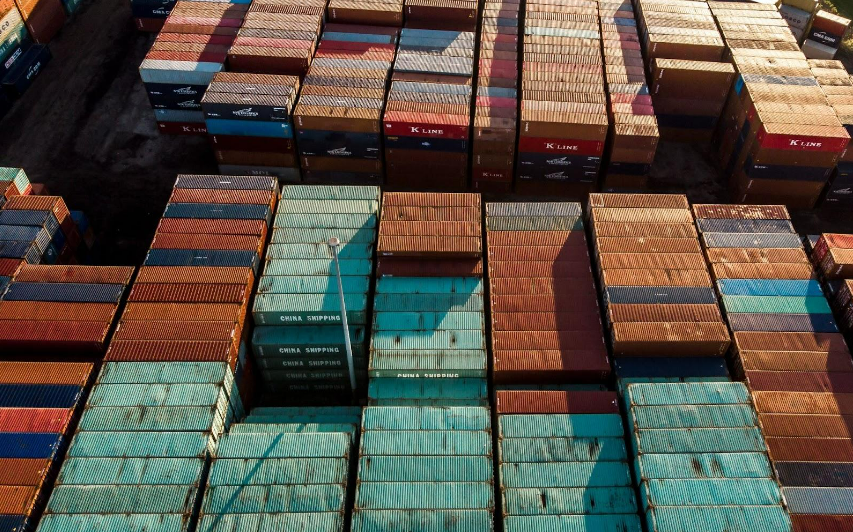What is FOB Destination? Meaning, Terms, Who Pays?

If you’re in the shipping industry, you need to be familiar with the shipping term FOB destination and all it implies. You should be able to answer the question of what does FOB mean in shipping and convey the fob price meaning. FOB is an acronym that means “free on board,” so FOB destination means free on board destination.
What is FOB Destination
The term “FOB” is used in international and freight shipping. The shipping term fob stands “free on board.” Shipping contracts and purchase orders often spell out the delivery and payment terms, the date when the loss risk switches from the seller to the buyer, and the party responsible for paying insurance and freight premiums.
In the purchase order, the seller and buyer agree on the FOB terms. The buyer and seller’s bill of sale or other agreement determines ownership; FOB status only indicates which party is responsible for the cargo from beginning to end.
How effective products move from the vendor to the customer depends on how well both sides understand free on board (FOB). FOB conditions may affect inventory, shipping, and insurance expenses, regardless of whether the transfer of products happens domestically or internationally.
The International Chamber of Commerce (ICC) publishes 11 Incoterms (international commercial terms) that outline the roles of both sellers and purchasers in global shipments. The version of Incoterms currently in effect is Incoterms 2020. The ICC reviews and updates these terms once every decade; the next update is in 2030.
The term “free on board” differs from country to country. To prevent misunderstanding and mis-use of incoterms in the contract, and to guarantee that you ship products in compliance with local legislation, it is best to contact a local attorney before using the incoterm “free on board” or trying to set up an fob shipping point agreement or taking on an fob jobsite.
Buyer’s Inventory Cost: Who Pays Shipping Costs?
Until the products arrive at the buyer’s destination, the seller maintains ownership and is liable for replacing any damaged or missing items under the terms of FOB destination.
For international trade, contracts establish and outline provisions–such as the FOB designation, payment terms, time and place of delivery–for shipments that are being made out of the country.
These provisions outline the point when responsibility for risk of loss shifts to the buyer, who covers the freight charges, delivery location and time, and the payment terms for the shipments.
Remember that trade laws vary from country to country, so you should always review the laws of the country you’re shipping from.
Because inventory costs are all-encompassing, shipping conditions impact buyer inventory costs. This accounting technique is crucial because it delays the expenditure recognition associated with added inventory expenses, which ultimately impacts net income.
Where Does Transfer of Ownership Happen?
When products are received at the location the customer specifies, ownership passes from the seller to the buyer. The seller maintains ownership of the goods–and responsibility for replacing damaged or missing items–under the FOB destination agreement until goods arrive at their destination. Then, the buyer takes ownership.
If a seller ships goods to a customer that are lost in transit, the shipper must compensate for the loss by replacing the products or reimbursing the buyer for the cost.
FOB Destination Agreement Terms and Variations
Here are some of the different terms associated with free onboard destination shipping, and some possible variations, that you should be familiar with.
What is the FOB Shipping Point?
When a product is sold “FOB shipping point,” the buyer pays the seller or supplier nothing more than the cost of transporting the product to the designated shipment point.
The transaction is completed when the shipping company accepts possession of the merchandise for delivery to the customer, which implies that the buyer must pay all shipping expenses and assume any extra obligations associated with the shipment.
FOB Destination Point
FOB destination point refers to a product sold to a customer after it arrives at the buyer’s destination. In contrast to the FOB shipping point, the seller may bear the risk of loss and responsibility for transportation expenses while the goods are in transit.
When items are sold “FOB destination,” the title to the commodities may not pass to the buyer until the items are delivered to the buyer’s loading dock, post office box, residence, or place of business. Until the items have arrived at the buyer’s location, the seller retains legal responsibility for them. Once the products have arrived at the buyer’s location, however, the buyer assumes full legal responsibility for them.
Freight Prepaid and Allowed
Under the freight prepaid and allowed agreement, freight expenses are included in the final invoice that the buyer receives from the seller. Therefore, the seller is responsible for the risk of loss associated with the shipment until it is delivered.
Freight Prepaid and Added
The prepaid freight agreement says that the seller is responsible for the freight charges until the order arrives at the buyer’s destination. Then, the seller sends an invoice to the buyer for reimbursement when the items are delivered.

Buyer Pays Freight Collect
The buyer is responsible for paying any associated shipping costs when an item is shipped. However, until the shipment arrives at the buyer’s location, the buyer has neither ownership nor responsibility for the products.
FOB Shipping Point Terms: Insurance
Under FOB shipping point arrangements, the buyer is responsible for filing an insurance claim in the event of shipment loss or damage since the buyer holds ownership of the goods at the time.
Freight Collect and Allowed
Freight collect and allowed means that the buyer handles the costs. However, the buyer subtracts the shipping charges from the supplier’s bill rather than footing the bill out of pocket. In this arrangement the vendor still owns the items while they are in transit.
The point at which the title and responsibility for transportation costs transfers is essential to the various forms of FOB destination. The transportation department of a forward-thinking customer could choose FOB shipping point terms over FOB destination ones to maintain tighter control over the logistics process.
Customer-arranged pickup, in which the buyer arranges to have the goods picked up from the seller’s location and assumes responsibility for them at that time, may replace any FOB conditions. In this circumstance, the billing staff must be notified of the changed delivery conditions so they do not charge freight to the consumer.
Since the buyer takes possession of the items at its receiving dock, that is also where the seller should document a transaction.
At the same time, the buyer should be adding to its stock. The buyer assumes all risks and benefits of ownership as of the moment the shipment arrives at the shipping dock. Also, under FOB destination conditions, the seller is liable for the merchandise’s transportation costs.
Since the seller retains ownership of the items throughout the transportation damage period, the seller should file any claims with the insurance company.
The shipper will generally register a sale as soon as cargo leaves its shipping pier, irrespective of the delivery conditions. Thus, the true significance of FOB destination conditions is the issue of who pays for the freight.
Alternatives to FOB Destination?
In international commerce, the most prevalent words are “free on board” (FOB shipping point) and “free on board” (destination). The shipping point designated as “FOB” is used for 99.8% of all cargo shipments. However, in search of more adaptable conditions, many merchants now opt for other transportation methods:
- FAS (Free Alongside Ship): In this scenario, the seller is in charge of arranging customs clearance and delivering the items to the quayside of an outbound shipping vessel.
- CIF (Cost, Insurance, and Freight): The buyer is responsible for insurance and freight costs; the vendor covers only shipping costs. The risks become their responsibility when the items are delivered to the buyer’s designated port.
- DDP (Delivered Duty Paid): Since the seller pays the taxes and import duty, you won’t have to worry about paying anything extra to get the package delivered to its final destination.
- CPT (Carriage Paid To): The seller is on the hook for shipping costs until they make the items available to the buyer in any portion of your facility, including warehouses, loading docks, and corridors.
- EXW (Ex Works): The seller holds all responsibilities until the items are made available to the customer at their location. Delivery to the buyer’s location entails putting products into the truck. The vendor has no duty to put the items onto a carrier or to arrange transportation over public highways.
While there are pros and cons to all of these choices, it’s crucial to remember that the goods being imported and exported will determine which transportation method is best. For instance, DDP may not be the best choice when importing expensive goods like electronics or jewelry because of the significant customs charges that must be paid at the border.
In Conclusion
When transporting products to a customer, the two basic alternatives are FOB shipping point or FOB destination. FOB shipping point holds the seller responsible for the products until they begin their journey to the consumer. With FOB destination, the seller is held responsible for the items until they reach the customer.
